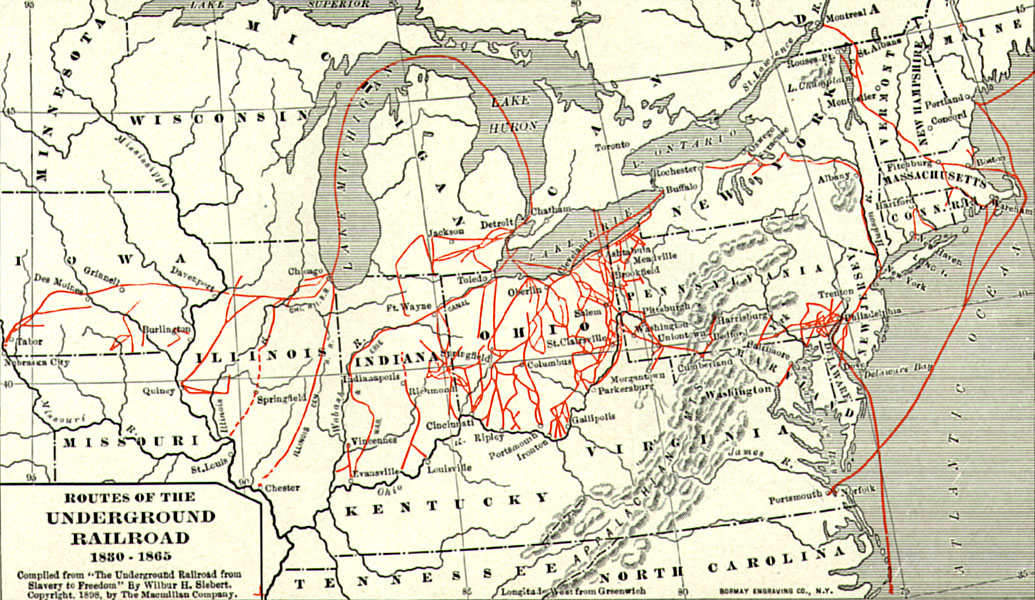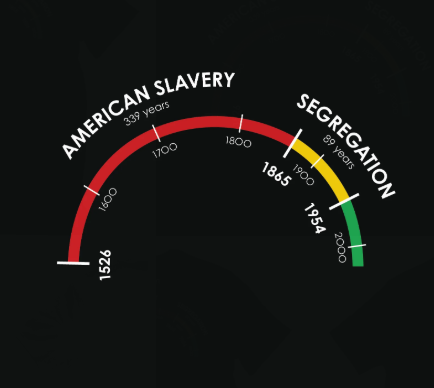
Emma Scott is in 10th grade and this is her first year writing for NAEye. Outside of school, she likes arguing with people at speech and debate tournaments...


It is unthinkable that, although Pittsburgh was a hub for fugitive slaves escaping persecution, many Pittsburghers today have no idea
March 5, 2020
“Those who cannot remember the past are doomed to repeat it.” It was George Santayana who originally said these famous words, and they have since been applied to a variety of situations.
It is important that we remember the Holocaust as we continue to fight modern antisemitism. Gender inequality should be kept in mind as we continue to promote women’s rights. And the legacy of slavery must be commemorated as we fight for racial equality.
However, many of the heroes and pioneers that championed these causes; the very people that we should be honoring and remembering; have nearly disappeared from public memory. A great example of this is the many heroes of the abolition movement.
When asked to identify as many black historical figures from the slavery era as possible, many people would say Harriet Tubman and Frederick Douglass. Although these people are great heroes who should be remembered, it is vital that we better educate ourselves on the legacy of slavery and abolition past these two individuals.
Pittsburgh is a cultural, historical, and technological hub. Rich with history and importance, there are many more important factors that play into the nature of the city than most people realize.
Sure – there are three champion sports teams, more than enough bridges, and an atrocious accent. Relatively recently, the city has transformed from a metropolitan smog cloud into a thought bubble bursting with innovations in the fields of research and medicine.
It may come as a surprise, even to those who have lived in Pittsburgh their entire lives, that Pittsburgh played an instrumental role in the freeing of slaves through the Underground Railroad. The involvement aided in the escape of 100,000 slaves, according to the New York Times.
It is vital to understand the importance of the operation of the Underground Railroad as a whole, and it can be even more interesting to see how it played out in our own backyard. Last month was Black History Month, so I thought it would be an opportune time to investigate this topic.
I spoke with Sarah Greenwald, co-director of education at the Pittsburgh History & Landmarks Foundation, in order to seek an expert source on the topic. The first question I asked was, “Why don’t many people know about the important role that Pittsburgh played in the operation of the Underground Railroad?”
As I told my peers about the article I would be writing many of them, just like me, were unaware of our city’s significance in this part of history. Perhaps it is the fault of the education system. Teachers can only fit so much information into their curriculum, and a large portion of this teaching is preparation for standardized tests. With this one-sided, limited curriculum, how much can we really learn?
Maybe, it is because parts of history have been lost to the past. The Fugitive Slave Act forced slaves to be returned to their owners if they were found, even when they had escaped to a free state; therefore, no one was very enthusiastic about documenting their crimes at the time.

It is a great misconception that as soon as slaves got to free states, they were home free. Slave hunters would work to return fugitives to their owners in the south, but they knew to largely avoid Pittsburgh due to the very strong abolitionist community. The Pittsburgh Daily Gazette, an anti-slavery newpaper once wrote, “No fugitive slave shall be taken from this city without an effort to resist it.”
Then I wondered, what made Pittsburgh so special? Why was it a desirable location to escape to? The answers are related to what has been the city such a success in various industries.
The geography of Western Pennsylvania has been a major influence on the history of the area. The tall hills, deep valleys, and three major rivers have always been essential and made the area into what it is today.
The hilly landscape and towering trees made travel within the region more hidden and illusive. In terms of travel from the south, the Monongahela river was essential. It flows from the south to the north – in the direction of Canada – the final destenation and safe haven for many of those escaping slavery. Those who did not travel by steamboat on the Monongahela River had to walk thousands of miles to get past the Mason-Dixon line, and then 50 miles further to get to Pittsburgh.
Of course, it would not have been possible without the help of a few key people in a few key locations. Although the Underground Railroad was largely veiled in secrecy, some of the operations occurred in plain sight.
The house of Thomas J. Bigham is located on the top of Mount Washington, in plain sight. He would leave a lantern out to let runaway slaves know that his house was a safe place for them to stay. He was also a member of the House of Representatives and Senate, but also was a notable abolitionist who offered his home as a safehouse on founded the Pittsburgh Gazette, an abolitionist newspaper.
Martin Delaney was another Pittsburgh based abolitionist who assisted in the fleeing of many slaves into Canada, while working alongside Fredrick Douglass. He is commonly known as the “Father of Black Nationalism.”
Unfortunately, many of the vital locations of the time no longer stand in our city. Places like the Monongahela Hotel, which doubled as a safe house at the time, have been torn down and replaced as urban renewal swept through the Pittsburgh area. However, whether these sites can be visited today or not, their memory should still be kept alive. In a time of so much political and social turmoil it is vital that we remember the lessons that history has taught us, especially when it played out in our own backyard not so long ago.

Emma Scott is in 10th grade and this is her first year writing for NAEye. Outside of school, she likes arguing with people at speech and debate tournaments...
Peggy Flynn • Mar 11, 2020 at 3:26 pm
Extremely well written article! Thank you for recognizing that state mandated testing does limit the time available for study of such relevant and important topics.